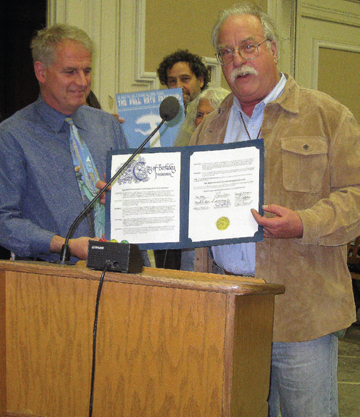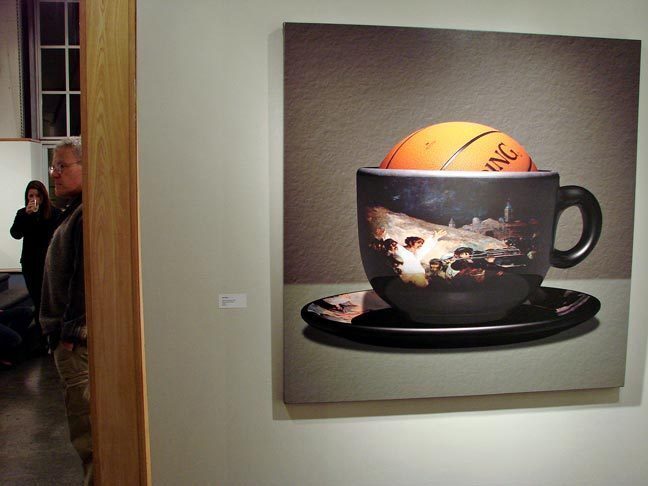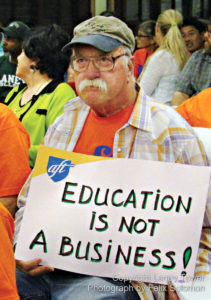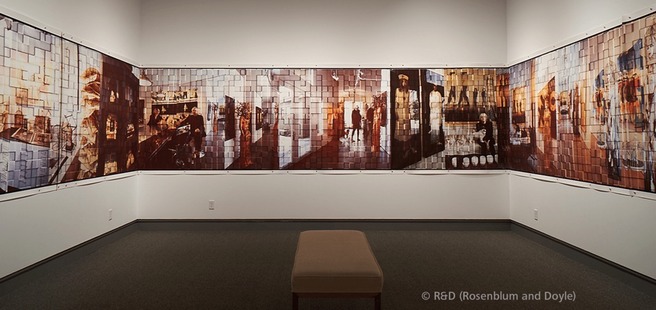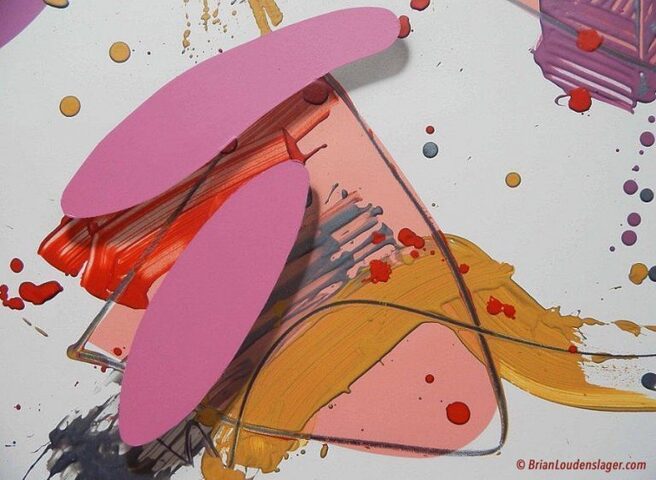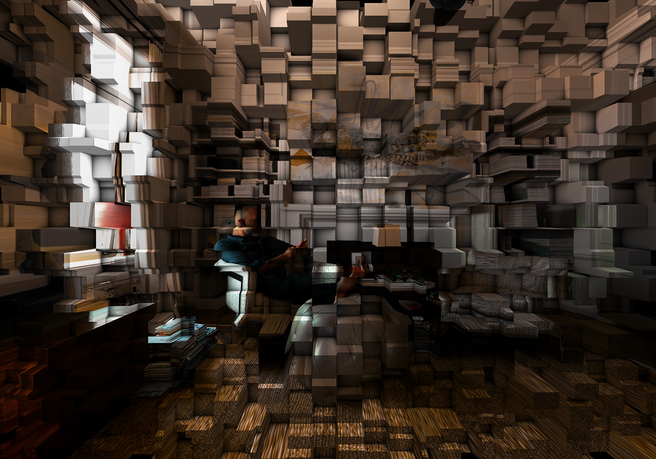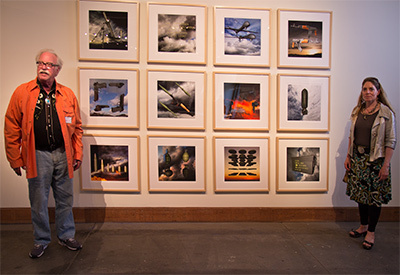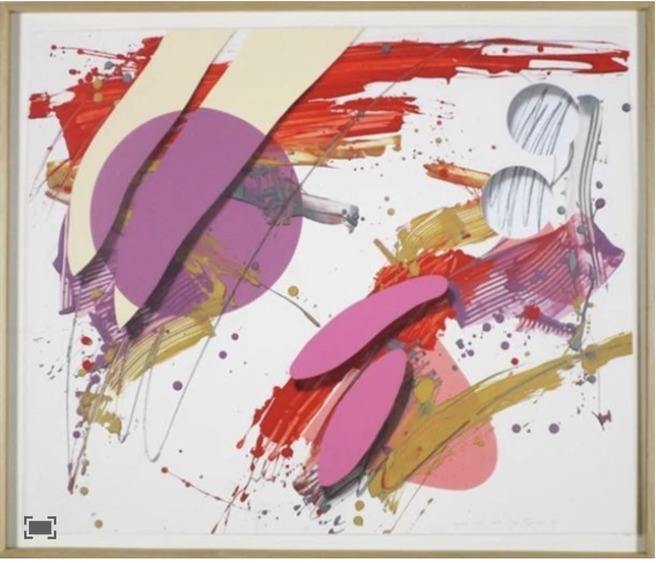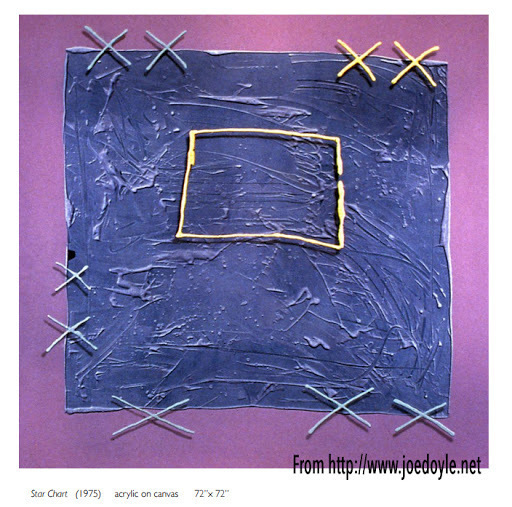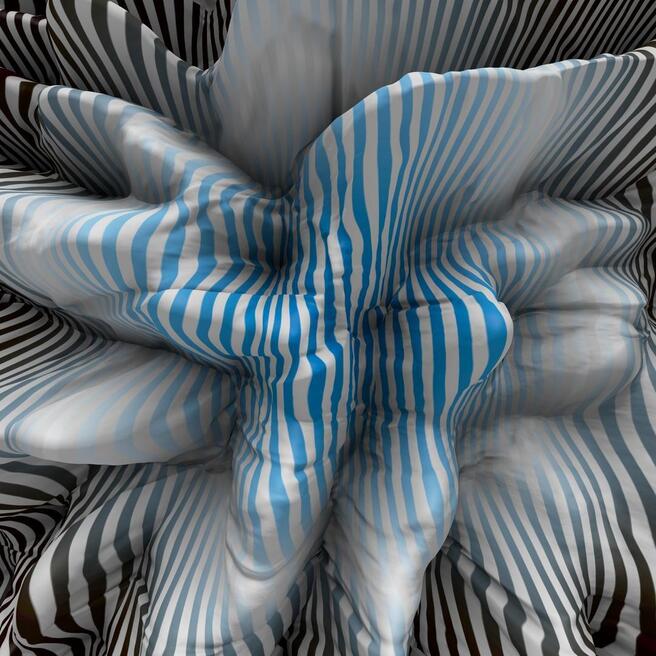New Formalism in Painting and Photography - Saint Mary's College
May 4, 2020
(Moraga, CA) July 10, 2019—New Formalism in Painting and Photography, on view from July 25 through December 8, 2019 at the Saint Mary’s College Museum of Art, presents the collaborative work of artists R&D, Diane Rosenblum (b. 1964) and Joe Doyle (b. 1941), extending the boundaries of painting and photography together through digital manipulations
The exhibition features seven digital paintings and one large-scale installation photograph exemplifying Doyle’s leadership in illusionist painting with Rosenblum’s mastery of composite photography. Collaboratively, R&D transform the picture plane instantiating animation principles that the computer, as did the camera before it, to permanently alter the way we can see, shape, and understand the world.
At 5 feet by 70 feet, A Studio Visit with Judith Kindler wraps around four gallery walls, immersing the viewer in the studio with multidisciplinary American artist, Judith Kindler. The installation is a tribute to painters and photographers grappling with an exploration of space and time. Dispersed across the pictorial plane, hundreds of digital blocks emulate geometrical deconstructed shapes, forms, and colors. Recalling ideas explored by Pointillists and Cubists, R&D deconstruct visual perception of colors while reframing 3-dimensional subjects on 2-dimensional planes. The compiling of photographic sequences evokes homage to Edweard Mugbridge’s photographic advances in perceiving motion and time. R&D expand upon these advances, incorporating Cinema 4D to animate a comprehensive non-cyclical image with two realities –the original camera view documenting the artist’s studio, and the composed view shifting the geometric blocks forward and backward from the conventional picture plane.
R&D’s digital paintings leave the representational world, entering an abstract space to explore how technology alters perception and experiences. In Adderly, the ribbon-like waves of pink flow as the irregular fin shapes of orange and cream flux into the illusion of the viewer’s space. Named after saxophonist, Cannonball Adderly, the colors and movement suggest rhythm and motion through the abstraction. Doyle states, “Like jazz, our work is best seen and observed over time in order to absorb the aesthetics.” In Krystna, named in reference to Samuel Taylor Coleridge’s poem, the “abstraction is with attitude, abstraction gone wild.” Similar to A Studio Visit with Judith Kindler, Krystna contains an underlining composite image of an artist studio, Pete Wheeler in Berlin, Germany. R&D manipulate the digital painting through extensive software to remove all imagery of the original camera view, leaving only the colors of Wheeler’s studio to dominate the pictorial frame
New Formalism in Painting and Photography, was on view from July 25 through December 8, 2019, is organized by April Bojorquez, curator at the Saint Mary’s College Museum of Art. Reception held on Thursday, September 5 from 6 to 8 p.m. Visitors had the opportunity to meet the artists. On Thursday, November 21, R&D the artists discussed their artistic practice and collaborative approaches.
For additional programming and information, please visit, www.stmarys-ca.edu/museum.



